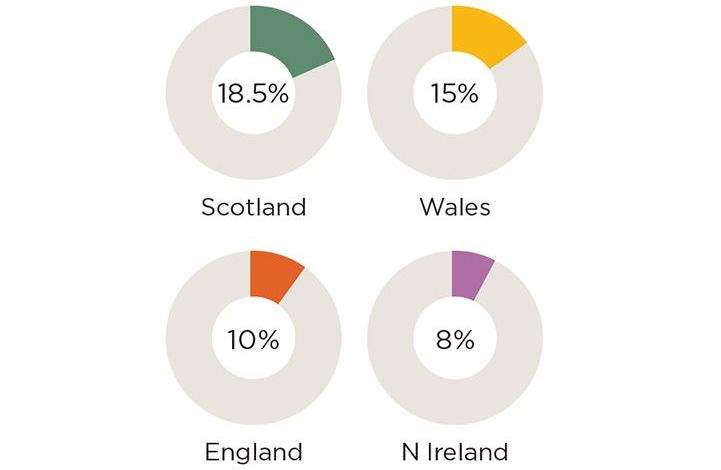The services and benefits that natural capital can deliver underpin the new policy architecture for UK land
The 25 Year Environment Plan (EP) sets out the general principles for UK land management, namely: public money for public goods, more effective application of the 'polluter pays' principle, and the concept of “net environmental gain” on all land use. The Agriculture Bill focuses on the public money for public goods element, but acknowledges that market and supply chain relations remain key tools to manage and allocate risk fairly among market players. It can be expected that further detail on the 'polluter pays' and 'net environmental gain' elements will be set out in the Environment Bill, expected in May, which should provide the framework for all land use in the UK. These policies recognise the significant benefits that forestry and woodland will contribute as suppliers of eco services in the new natural capital-based policy architecture.
Natural capital is the stock of the world all around us – earth, air and water and all the components that are linked with them: trees, minerals and peat bogs, to name but a few
Savills Rural Research
Natural capital is the stock of the world all around us – earth, air and water and all the components that are linked with them: trees, minerals and peat bogs, to name but a few. Ecosystem services are the services that natural capital can deliver, such as the sequestration of carbon by trees, the filtering of water by soil and the flood prevention provided by landscape management and flood plains. Services also include the provision of food, fuel and fibre, and the pollination of crops, as well as wellbeing values.
The proposed New Environmental Land Management Scheme (NELMS) in theory is underpinned by natural capital principles, meaning that payments to land managers for “public goods” will be based on a natural capital valuation of those assets and the services they provide. This could open up funding for managing natural resources, especially to mitigate climate change by sequestering and storing carbon.
Forestry, woodlands and hedgerows can provide a range of other ecosystem services and benefits such as recreation, public access and enhancing landscapes. The market potential for services will largely depend on the location of the asset, as shown by the higher grant rates under the new Woodland Grant Scheme for public access measures. Factor in existing and potential markets for fibre for fuel and timber, flood alleviation, water filtration, prevention of soil erosion, and biodiversity outcomes, and some attractive returns may be on offer.

In 2018, 13% of UK land area is woodland, which is evenly distributed between conifers and broadleaves. On a country basis, Scotland is the most forested country (18.5% of its land area), followed by Wales (15%), England (10%) and Northern Ireland (8%). There are regional differences in forestry type, with conifers making up three-quarters of Scottish woodlands, while broadleaves are the dominant tree type in England (74% of woodland area). There is a more even distribution between conifers and broadleaves in Wales and Northern Ireland.

Source: Savills Rural Research
The area of woodland increased during the latter half of the 20th century (from 6% in 1947) as a result of a steady programme of afforestation throughout the UK. Planting rates reached a high of 30,000 hectares annually in the late 1980s, but have declined dramatically in recent years, averaging 9,000 hectares annually since 2010.
.jpg)
Source: Savills Research
Read the other articles within this publication below
.jpg)
.jpg)
.jpg)
